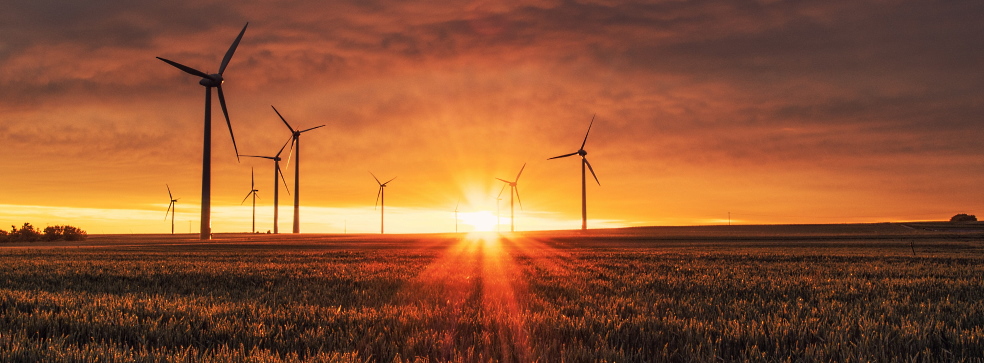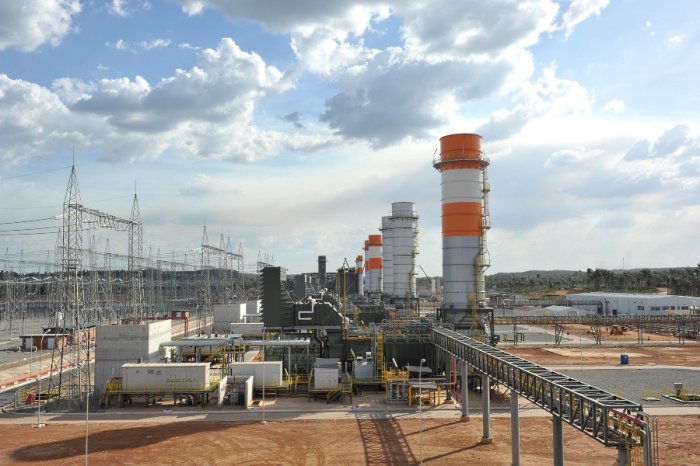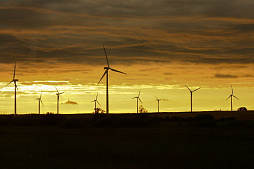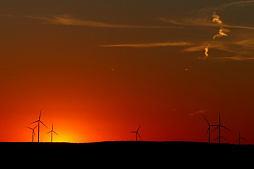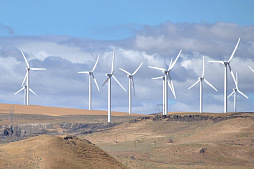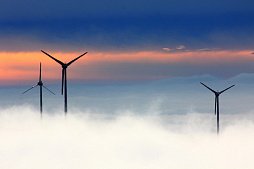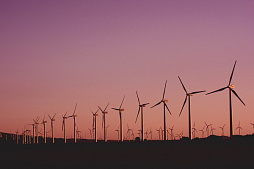To consider an application for financing, fill out the form and send it to us by e-mail along with the project brief, or contact our experts
- Groundworks, construction of roads and foundations of a wind farm
- Building foundations and platforms for wind generators
- Wind turbine installation works
- Installation of electrical equipment for wind farms
- How much does it cost to build a wind power plant
- Wind farm construction: EPC contract
In addition to large enterprises, the construction of wind farms can be carried out for the needs of small customers, farms and private customers.
Our company offers a full range of services and modern solutions for issues related to the efficient use of renewable energy sources (RES).
We with partners specialize in the implementation of investment projects related to the financing and construction of wind farms around the world.
Wind farm construction services include the following steps:
• Construction of access roads and land clearing.
• Construction of main buildings and structures for the operation of the power plant.
• Pouring foundations, purchase, delivery and installation of wind generators.
• Installation of medium / low voltage lines, fiber optic communication, etc.
• Construction of an electrical substation for wind farms.
• Testing and commissioning.
The company provides professional project management, as well as oversees investment projects with the participation of leading industry experts.
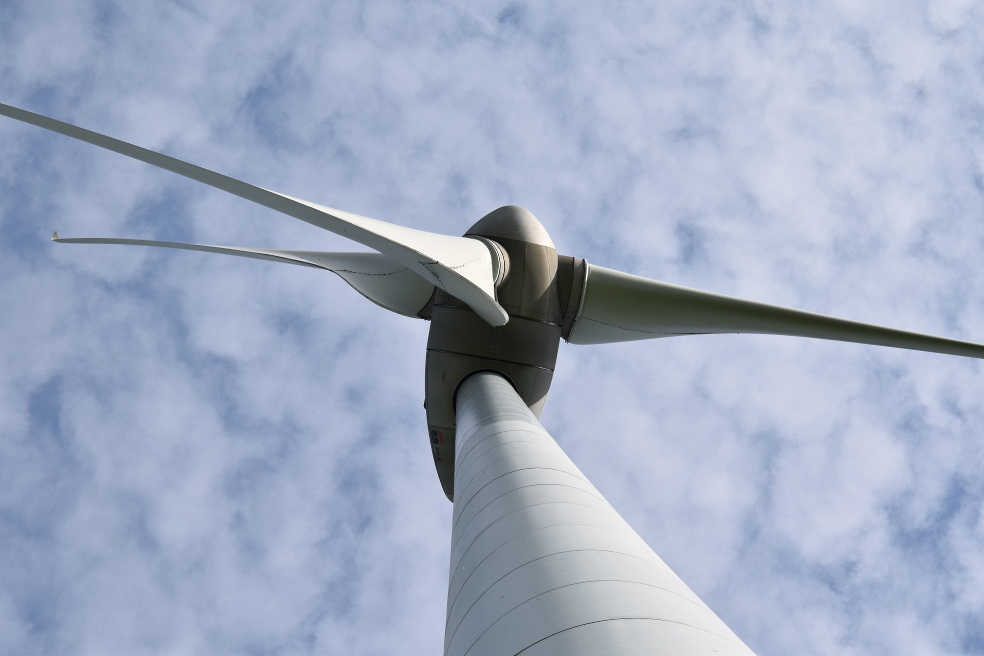
Groundworks, construction of roads and foundations of a wind farm
Before starting excavation, it is important to examine the soil and evaluate the climatic and topographic features of the construction area.Unforeseen external factors can cause delays and increase the cost of work, and sometimes lead to the shutdown of the entire project.
At the stage of excavation and foundation pouring, heavy equipment will be involved, which requires the presence of appropriate access roads to the construction site.
In some places, such as road crossings or water barriers, coordination of construction work with owners or local authorities will be required.
Detailed geotechnical studies carried out at the site make it possible to accurately determine the characteristics of the terrain and make a conclusion about the safety (feasibility) of further work.
In any case, our engineers strive to make the wind power plant as compact as possible in order to minimize the construction area. At the design stage, a rational layout of the facility is selected and the optimal location of substations, roads, communication and power lines is developed.
Roads and driveways
The access roads to the wind farm should be designed in such a way that heavy vehicles can easily reach the locations of the wind turbines, especially at subsequent stages of maintenance and repair.In this regard, there are a number of clear requirements for access roads. This applies to bearing capacity, stability of slopes, etc.
Before the construction of the road, the soil must be prepared properly. In particular, a thorough filling in several layers will allow to withstand the load if the delivery of wind generators is carried out by heavy trucks.
Usually, filling is carried out with a layer of natural gravel a few centimeters thick, then a second layer of artificial gravel is laid to give the soil the necessary strength.
Another requirement is related to the width of the roads, since the construction and modernization of wind farms involves the delivery of equipment in vehicles with a large turning radius.
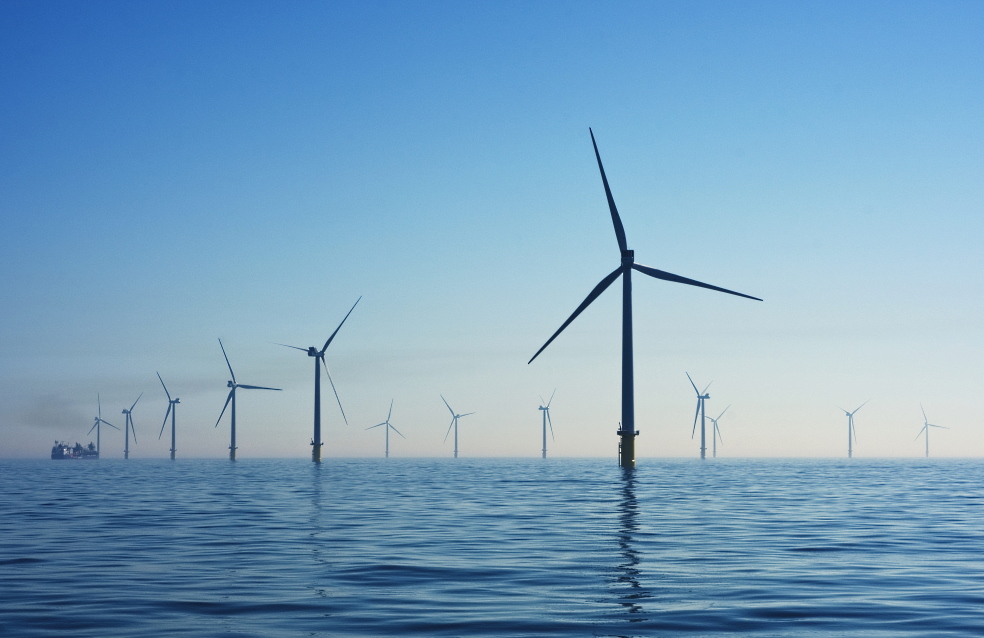
The length of the blades of wind turbines can exceed 50 m, therefore, vehicles carrying these components may encounter difficulties when turning. For this reason, engineers must adhere to certain values of the radius of curvature that are suitable for large vehicles.
Road slope is another important point to consider when building, as heavy vehicles usually have difficulty driving over steep slopes. In this regard, certain requirements have been established that must be strictly observed at the design stage. The maximum slope of the roads is about 15-17%, which is taken into account when concreting or asphalting the road.
These values are indicative, since the exact parameters of the road will be determined depending on the features of the project. Engineers are ready to provide any design services and provide you with professional advice at any stage of the project.
Building foundations and platforms for wind generators
Wind turbines, once installed, will withstand significant loads that can jeopardize the stability and integrity of the structure.That is why the foundations of wind generators are designed to withstand any operating conditions on a particular site.
For the correct calculation of the foundation under each wind generator, it is necessary to conduct a geotechnical study of each site. At this stage, our engineers determine the condition of the soil under the foundation and adapt it to specific conditions.
Study may reveal soft ground or hard rock with high load bearing capacity.
These and other aspects are considered when designing a foundation that ensures structural stability.
Foundations for wind generators are divided into two groups:
• Surface foundations supported by the surface layers of the soil: used if the soil has sufficient bearing capacity or the foundations are designed for relatively small loads.
• Deep foundations, which are poured to a considerable depth: if the structure has to withstand higher loads, the space for the distribution of emerging stresses increases.

The foundations of the second type use piles that are immersed in the ground and provide greater structural stability to possible stretching, compression, friction or bending.
Pile foundations are used for soils having a low bearing capacity.
This solution helps to avoid extreme loads, which lead to the destruction of the structure during operation of wind generators.
A surface foundation with a large area of contact with the ground is usually used to maintain the weight of the tower, blades and gondola. A large area is needed to counter bending forces arising from the impact of wind on the turbine.
When pouring foundations for wind generators, durable reinforced concrete is used, the main material for the construction of facilities of this kind.
The geometry of offshore foundations varies depending on many factors. Typically, engineers prefer round geometry, which optimizes material consumption, and polygonal (hexagonal or octagonal) structures, which have a significant contact area and absorb stress well.
Another advantage of polygonal foundations is the reduced need for internal reinforcing elements, since the larger the number of sides, the less material is needed for reinforcement.
The wind farm platforms are specially equipped platforms that are located next to the wind turbine.
They contain a significant part of the equipment for the operation of the turbine. Platforms are quadrangular or polygonal spaces (usually square or rectangular) with side sizes from 20 to 60 meters.
During the construction, heavy cranes operate here, which mount individual parts of the turbine, transformers, etc. Wide roads and places for storing materials are equipped around the platform.
Wind turbine installation works
After preparing the construction site and supplying the necessary components, the construction team starts the installation of the wind generator.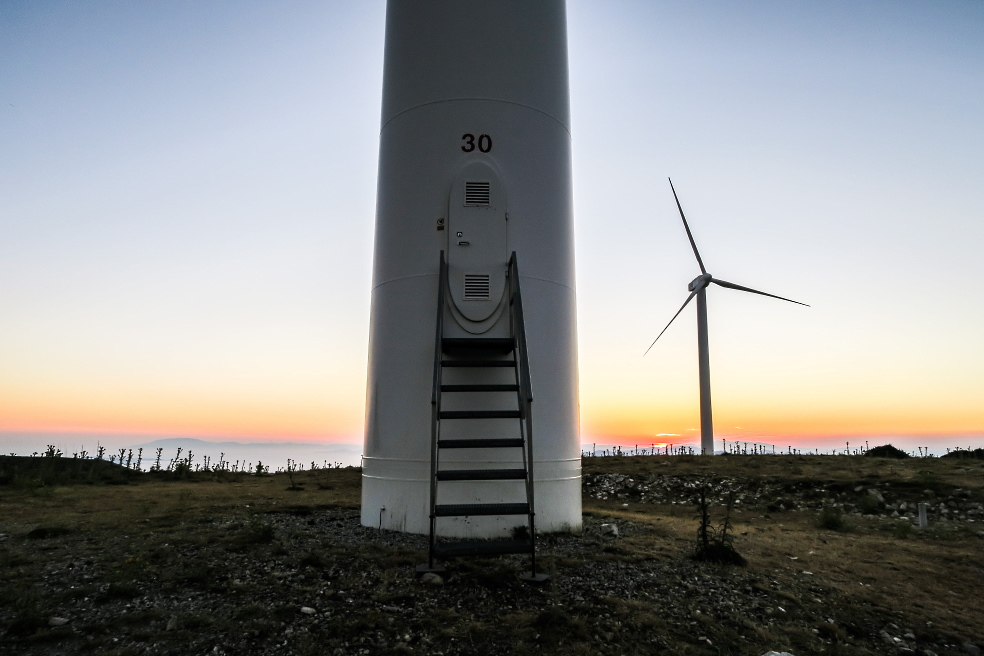
These works include:
• Installation of sections of the tower.
• Installation of a gondola on a tower.
• Assembly of rotor blades.
• Installing the rotor.
The first and main requirement at this stage of work is the strict observance of safety rules when assembling wind turbines.
This is especially true when builders work with heavy components at great height.
The coordinated work of crane operators and other specialists is crucial when connecting the tower section and mounting the rotor. Our clients shouldn't worry about the quality of work. Our company carefully selects personnel to perform construction and installation works on high-rise facilities.
The bottom of the tower will be installed first. It is the point of contact between the foundation and the wind generator. The tool for connecting these two elements is a thick tip at the base, which can be fixed with bolts.
Similarly, the remaining sections of the tower of the wind generator are connected until the installation is completed. Each next section is mounted at an increasing height.
The next step will be the assembly of the gondola, which is lifted by a crane, where qualified installers will fix it on the tower. After that, the rotor blades are assembled on the sleeve, which is carried out on the ground using two cranes.
Builders insert bolts of each blade into the hub, collecting the entire rotor. As soon as this is done, the rotor is lifted using cranes and placed vertically for installation on a nacelle.
Despite the apparent ease of installation, in fact, assembling a large-sized flat structure on the ground presents difficulties even for experienced professionals. Limited space at the construction site and difficult orographic conditions do not allow the rotor to be freely placed on the ground.
This is why some manufacturers are introducing blade to blade systems, thanks to which the hub can be mounted on a nacelle without blades. After that, the blades are separately mounted at a height using a special tool that provides rotation of the blades during the assembly process.
This may be the optimal solution for small construction sites, which allows you to assemble large wind turbines in difficult conditions. It should be noted that each of the methods for installing wind turbines requires strict compliance with safety requirements.
For example, a certain height between the crane boom and the load being transported helps to avoid problems caused by gusts of wind. In addition, all companies are required to use only certified components, machinery and equipment that have proven their suitability for specific purposes.
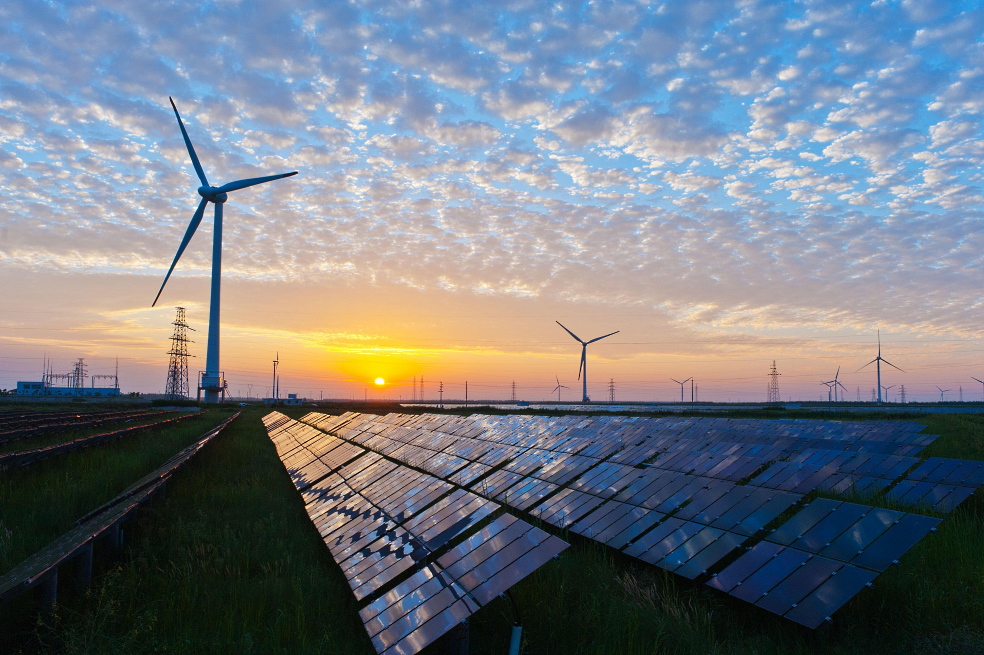
Installation of electrical equipment for wind farms
This infrastructure of the wind farm will consist of several types of installations, such as step-up transformers, a medium voltage line that will transfer energy to the substation, weather towers for collecting wind data and communication lines for control systems.Transformers for wind generators
Typically, transformers are located near the base of the wind turbine.Equipment for converting current will include the actual transformer to increase the voltage from the wind generator, equipment for medium and low voltage networks, as well as protective devices (fuses and circuit breakers).
This complex of electrical equipment is most rationally located in isolated cabinets near the base of the tower. Such cabinets must have ventilation and two doors for maintenance.
Medium voltage lines
Laying of medium voltage lines from wind generators is always carried out underground through trenches, where the cables will be protected with high-strength cable channels.The size of the trench depends on the number of cables, but usually they have a depth of more than one meter and up to half a meter in width. The ground cable will be laid at the bottom of the trench, and the soil layer from the excavation will be distributed over it.
A layer of river sand can be laid on top, along which medium-voltage cables will pass. Above them is laid the next layer of river sand and a series of precast slabs that will act as mechanical protection against accidental damage.
After the construction of the medium voltage line, auxiliary fiber optic cables with protective plates are laid.
The work ends with filling the trench with soil and installing the appropriate alarm to warn of the presence of cables.
In cases where trenches cross roads and other obstacles, special pipes are used to reliably protect the cable. Sometimes they have to be concreted if the zone is intended for heavy vehicles.
Medium voltage cables connect the cabinet of the wind generator to the input of the substation, starting from the entrance to the cabinet, and ending with the protective devices of the substation. Grounding of wind turbines usually consists of a system of copper rings attached to the reinforcement of the foundation during concreting.
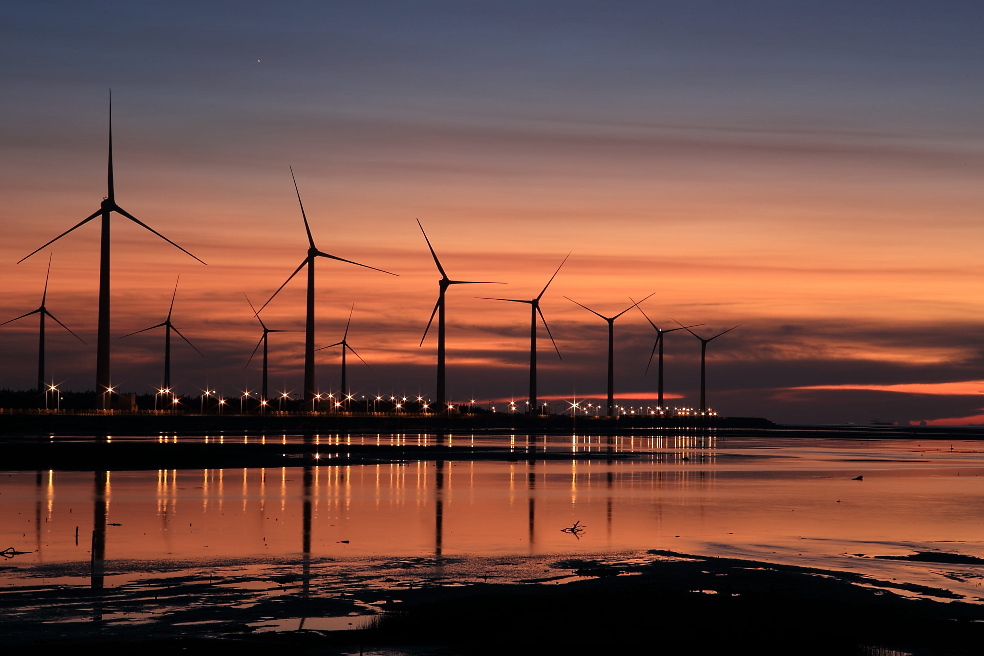
Weather towers of a wind farm
Weather towers are control structures that are installed before the start of construction work.They are responsible for all measurements on site, calibration and verification of data, determining the necessary parameters for communication and operation of auxiliary equipment of the wind farm.
During the construction of weather towers, a large amount of earthwork is carried out to prepare trenches for laying fiber optic cables, and a power source for the of electrical equipment is also being installed.
How much does it cost to build a wind power plant
Last year, the European Wind Energy Association (WindEurope) once again calculated how much it costs to build a wind power plant.For several consecutive years, there has been a clear progressive decrease in the average cost of construction, both in land and offshore wind energy.
WindEurope estimates that the construction of land-based wind farms will cost an average of about 1.4 million euros per 1 megawatt of installed capacity, compared to 2 million euros in 2015.
The cost of building offshore wind farms has also dropped significantly amid active research and development in the EU and the USA. Since such wind farms do not occupy valuable agricultural land, this technology has interested investors around the world.
Currently, the average cost of an offshore wind power plant is less than 2.5 million euros per 1 MW, compared with 4.5 million euros in 2015. WindEurope emphasizes that reducing investment costs contributes to the construction of much more powerful wind farms with the same investment.
In 2018, the total investment in the European wind energy market amounted to 27 billion euros. This year alone, the EU made final investment decisions on the construction of wind power plants with a total capacity of 12.5 GW.
The largest investments in wind energy in recent years have been registered in the UK, where offshore wind farms are extremely popular. Sweden is in second place, but local investors are betting on land-based wind farms.
WindEurope notes that the Mediterranean countries, as well as the countries of Central and Eastern Europe, in 2018 were responsible for only 4% of pan-European investments in wind energy. At the same time, the European Wind Energy Association emphasizes the resurgence of activity in the wind energy markets of Spain and Poland.
Obviously, this promising technology will spread more actively as the construction of wind power plants becomes cheaper and more affordable.
Top 10 countries in total installed capacity of wind farms in 2019:
| Country | Installed capacity, MW |
| China | 236400 |
| United States | 105460 |
| Germany | 61350 |
| India | 37500 |
| Spain | 25800 |
| Great Britain | 23510 |
| France | 16640 |
| Brazil | 15450 |
| Canada | 13410 |
| Italy | 10500 |
Wind farm construction: EPC contract
Together with our partners, we deal with all issues of wind energy, from project financing to the construction of wind farms.Wind farm construction services require complex organizational and technical training. Therefore, the most reasonable solution is to work with an experienced EPC contractor, for whom wind energy is a specialization and a life-long business.
Our experience in this area will ensure that the entire process is completed quickly, allowing the client to efficiently use wind energy to conduct business anywhere in the world.
The construction of a wind farm makes sense when the territory has the appropriate wind resources. It is also necessary to ensure compliance with environmental, technical and other standards at all stages of the project.
The construction of wind farms requires the approval of technical specifications, the adoption of an environmental action plan, the fulfillment of the conditions for connecting to the power grid, and, finally, obtaining construction permits from state bodies.
It is also necessary to prepare a power plant project and individual projects for electrical equipment or even a road project.
We support our clients throughout the process of preparing documents and permits, taking care of the smooth implementation of the project.
Contact our representatives in Spain to find out more.



